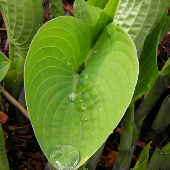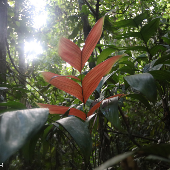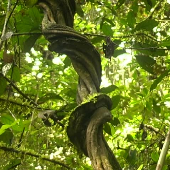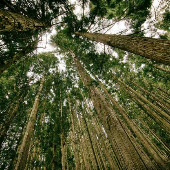







Epiphytes :- These plants live on the surface of other plants, mostly tree trunks and branches. This allows them to make the most of the sunlight in the canopy layer
Lianas :- These plants have their roots in the ground and use other trees to climb up into the rainforest canopy to maximise the sunlight they receive. Many start life in the canopy before sending roots down to the ground
Thin Bark :- Rainforest trees don’t need thick bark to prevent moisture like those in temperate deciduous forests – there is always plenty of rain and thus moisture available. Therefore bark is often thin and smooth – the smoothness may also make it more difficult for other plants to grow on tree surfaces
Buttress Roots :- Rainforest soils are very thin and therefore shallow roots are needed to soak up nutrients in these thin soils. Since trees in the rainforest grow very tall – many over 30m tall in the canopy layer – massive buttress roots form to give these tall trees extra stability in the shallow soils
Red leaves :- Young rainforest plant saplings may have these to give them protection from the sunlight whilst their internal organs for photosynthesis are still developing. They act as a sunscreen by reflecting red light whilst the leaf is still young
Leaf Angling :- Leaves are often arranged at different angles so that a plant avoids shading its own leaves – important in rainforests where competition for light is intense
Drip tips :- Leaves often have a waxy surface with pointed tips at the end to enable excess rainwater to run -off easily. This is important because it prevents the growth of algae, which if able to grow would block out sunlight and reduce a plants ability to photosynthesis
Stilt roots :- In a similar way to buttress roots, these provide tall rainforest trees with support as they are anchored in the shallow rainforest soils